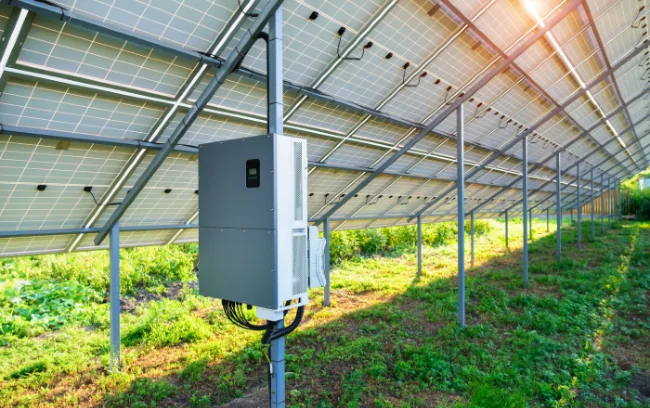A team of researchers from the University of Alberta is working on a project to find out.
This innovative practice, known as agrivoltaics, combines the use of solar panels with crop cultivation, allowing land to be utilized for both food production and energy generation simultaneously.
Agrivoltaics holds great potential in addressing various sustainability challenges, according to Guillermo Hernandez Ramirez, an associate professor and soil scientist at the University of Alberta. It tackles issues related to transitioning to renewable energy sources, feeding the growing global population, and taking action against climate change.
Aside from the dual land use and food security benefits, agrivoltaics could also contribute to reducing greenhouse gas emissions and optimizing water usage.
Moreover, its scalability makes it suitable for both rural and urban agriculture. By utilizing backyards and urban green spaces, it becomes possible to grow food and generate electricity in urban settings.
Hernandez Ramirez believes that adopting agrivoltaics in urban areas can help people develop a deeper connection to sustainability. It allows individuals to experience firsthand the production of both food and electricity, encouraging a sense of responsibility and care regarding the sources of these essential resources.
The University of Alberta pilot project is an initial step in exploring the potential advantages of agrivoltaics. Led by research intern Camila Quiroz, the experiment involved growing spinach plants under three different conditions: without a solar panel, shaded by a thin panel, and shaded by a thick panel. The researchers also measured the electricity generated by each type of panel.
Agrivoltaics demonstrated benefits for both plants and solar panels. The shade provided by the panels created a cooling effect that improved the panels’ efficiency, resulting in higher energy output.
At the same time, leafy plants like spinach and lettuce thrive in shaded environments, making the panels an ideal source of shade.

Preliminary results from the month-long experiment showed promising outcomes.
The spinach plants grown under the solar panels required up to 17% less water compared to those without panels.
Although their growth was slightly slower, the plants remained healthy and reached a suitable harvest weight.
The solar panels also generated a power output of 10 watts, sufficient to charge electronic devices such as mobile phones, tablets, LED lamps, or small appliances.
Once the project data is fully analyzed, the results will be published in a scientific paper.
Quiroz also plans to create a user-friendly guide for the public, enabling individuals to implement agrivoltaics in their own practices.
Hernandez Ramirez aims to share this guide with the City of Edmonton as an example of how agrivoltaics can be optimized for local weather conditions, supporting the city’s sustainable development efforts.
Moving forward, the team plans to secure research funding to expand their agrivoltaics studies.
They intend to explore different plants, such as berries and additional vegetables, and investigate various arrangements and angles of solar panels.
More To Discover
- Indonesia Celebrates Milestone with Southeast Asia’s Largest Floating Solar Power Facility for 50,000 Homes
- How Solar and Battery Storage Advances Are Powering Change in Africa and 2024 Will Be Even Better
- Exploring Agrivoltaics: Harnessing Solar Power in Farming for Enhanced Mutually-Beneficial (Maybe) Sustainability
- Al Dhafra Solar Farm: The World’s Largest Single-Site Solar Farm Shines On The UAE’s Renewable Energy Ambitions
They also aim to conduct outdoor experiments under different weather conditions.
Agrivoltaics represents a promising field of research, offering a win-win solution for society, as well as the food and farming industries.
By harnessing solar energy for both electricity and food production, we can take significant strides toward a more sustainable future.




















